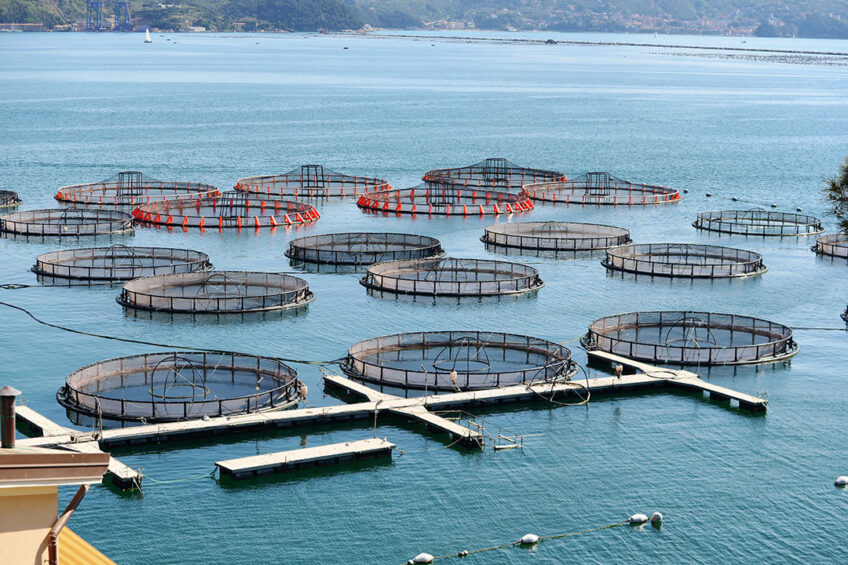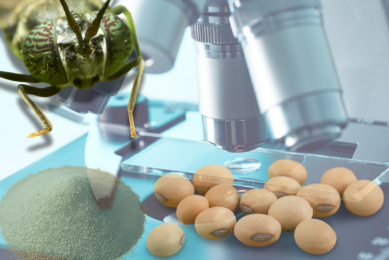Application of crop agricultural waste in aquafeed

The aquafeed industry has been relying on fish meal as its main feed ingredient for years, resulting in skyrocketing commodity price. This is why replacing fishmeal with agricultural waste is beneficial for the aquafeed industry. This article discusses the impact of adding various types of agricultural waste to aquafeed.
The increasing global population and food demand are leading to the expansion of the agricultural industry and thus the production of more agricultural waste. Agricultural waste includes residues from various agricultural activities such as the cultivation and processing of crops, and livestock, fruits and vegetable farming. Without proper waste management agricultural waste will be a liability for the environment, economy and public health. On the other hand, agricultural waste is highly nutritious for aquatic animals; therefore, incorporating agricultural waste into aquafeed ingredients is a sustainable cost-effective alternative for agricultural waste management.
Rice bran
Approximately 64 million tons of rice bran, a by-product of rice, is produced annually around the world and this is mainly used for poultry, ruminant and aquafeed. Rice bran comprises 17% lipids, 12% protein, 7% ash, 28% fibre, and 50% carbohydrates. Research has shown that rice bran can be used as a sole tilapia feed in a semi-intensive system resulting with similar fish yields as for those fed mixed diets. Supplementing fermented rice bran to aquafeed improves Pacific white shrimp production and increases the growth and survival rate of tilapia. In addition, the application of fermented rice bran maintains good water quality and promotes catfish growth and survival rate.
Wheat bran
Wheat bran, a fibre-rich by-product from wheat flour mill production, comprises 16% protein, 5% lipids, 6% ash, 12% carbohydrates, and 43% fibre. Moderate wheat replacement using wheat bran improves the growth and body indices of rainbow trout. Fermentation technique is used to degrade the fibre structure and increase the protein content of wheat bran. The use of fermented wheat bran in Nile tilapia diet improves growth performance.
Soy pulp
Soy pulp or okara, a by-product of the soy milking industry, contains a high protein content that binds to nitrogen from the soil. Soy pulp is widely used as a supplemental protein source and fermentation increases its nutritional value by decreasing the fibre content and increasing the protein level. Increasing the dietary fermented soy pulp to up to 50% improves African catfish health without adverse effects. In addition, substituting fish meal with fermented soy pulp increases protein digestibility and the essential amino acid profile. In Pacific white shrimp diets, 10-20% replacement of fish meal with soy pulp improves growth performance without negative impacts.
Peanut meal
Peanut meal, a peanut by-product produced from industrial peanut oil extraction, which contains approximately 45% protein and less than 10% fibre, is widely used for aquafeed. Peanut meal should be added in aquafeed at a specific dosage to prevent adverse effects on growth performance. Fish meal can be replaced with peanut meal in catfish diet by up to 25% with no adverse impact on growth. In addition, defatted peanut meal is suitable as a fish meal replacement of up to 50% for catfish feed formulation without any adverse effect on growth, while maintaining water quality. Furthermore, peanut meal blend can replace up to 60% of soybean meal in Yellow River carp diets without harming fish growth.
Molasses
Molasses, a by-product of sugar production, is widely used in aquafeed due to its high nutritional value, abundance and low cost. Molasses combined with maize starch promotes the growth of white leg shrimp. Molasses stimulates and increases denitrifying bacteria such as Pseudomonas, Comamonas and Zoogloea in an aquaculture system by providing carbon sources, thus enhancing waste removal and improving water quality.
Palm oil mill effluent
Palm oil mill effluent is the wastewater produced during palm oil processing in the refinery. Palm oil mill effluent is harmful to the environment if untreated before being discharged into the environment due to high biological oxygen demand and chemical oxygen demand. Palm oil mill effluent is used as a medium to propagate microalgae and grow chironomid larvae which provide highly nutritious feed for aquaculture species larvae.
Palm kernel cake
Palm kernel cake is a by-product of palm oil rich in protein and fat which is commonly used in fish feed formulation. Palm kernel cake is used as a protein source for red tilapia and catfish by up to 40% without compromising growth and health. Fermentation reduces the fat content of palm kernel cake before inclusion in aquafeed formulation and leads to a decrease in red tilapia weight gain.
Olive oil by-products
The olive oil industry produces high amounts of by-products. Olive oil wastes include leaves, crude olive cake, and oil mill wastewater. Olive oil by-products incorporated with feed increase the growth rate of rainbow trout. Olive leaf extract added to fish feed improves the growth performance and health states of Nile tilapia and shrimp. Methanolic olive leaf extract mixed with the shrimp feed improves resistance to the white spot virus syndrome.
Challenges of using agricultural waste in aquafeed
Crop agricultural waste contains anti-nutritional factors. Although anti-nutritional factors at low levels have a positive impact on animal health, high concentrations reduce the nutritional value of crop products consumed by animals. Thus, anti-nutritional factors are essential in determining the suitability of crops as an ingredient in feed formulation. The growing use of crop agricultural residues had led to the establishment of various methods to remove or reduce anti-nutritional factors in plant proteins such as soaking, germination, boiling, autoclaving, fermentation and genetic manipulation. The other challenge is the presence of pesticide residues in crop agricultural waste such as rice bran, which leads to environmental and fish safety issues.
Concluding remarks
Crop agricultural wastes including rice bran, wheat bran, soy pulp, peanut meal, molasses, palm oil mill effluent, palm kernel cake, and olive oil by-products are highly nutritious and cost-effective feed sources that can be included in aquafeed formulation. However, improper management of crop agricultural wastes causes environmental pollution and public health issues. Therefore, further studies are needed to assess the potential risk and economic value of using crop agricultural waste in aquafeed.
This article is based on the publication: Recent Advances, Challenges, Opportunities, Product Development and Sustainability of Main Agricultural Wastes for the Aquaculture Feed Industry– A Review. Annals of Animal Science. 23. 25-38, 2023.











